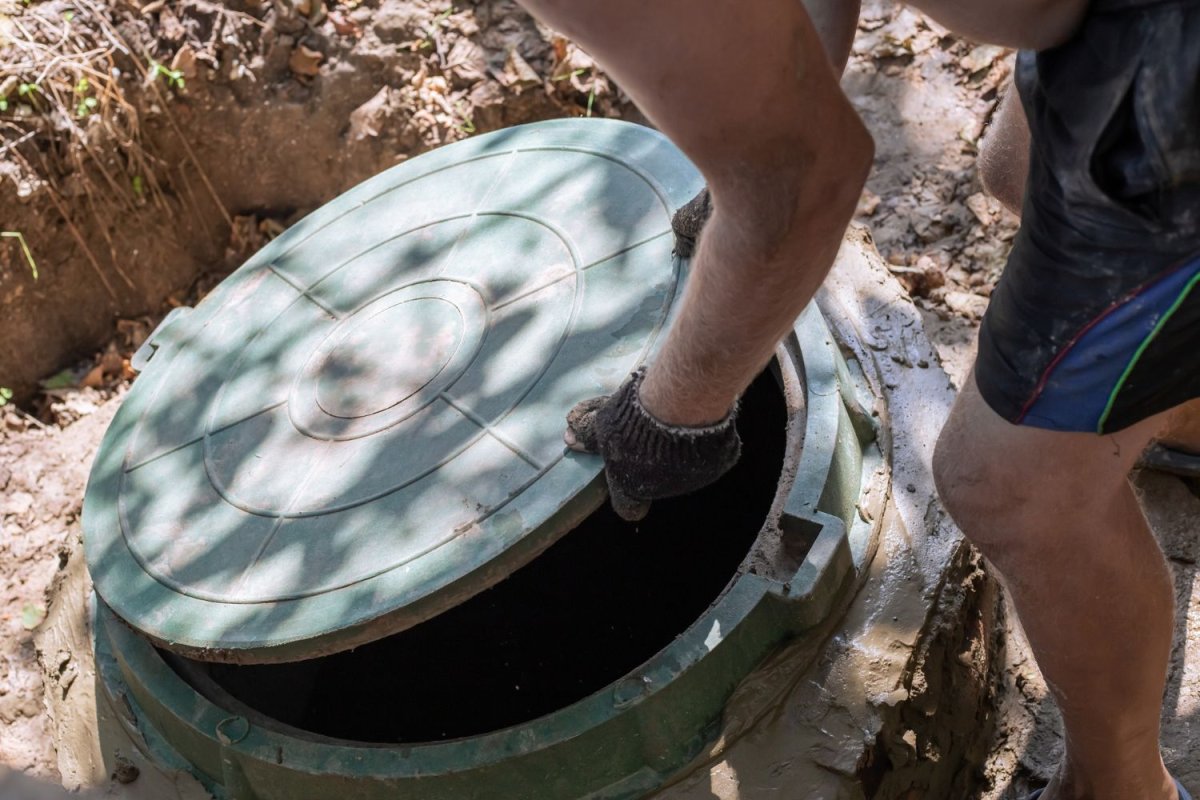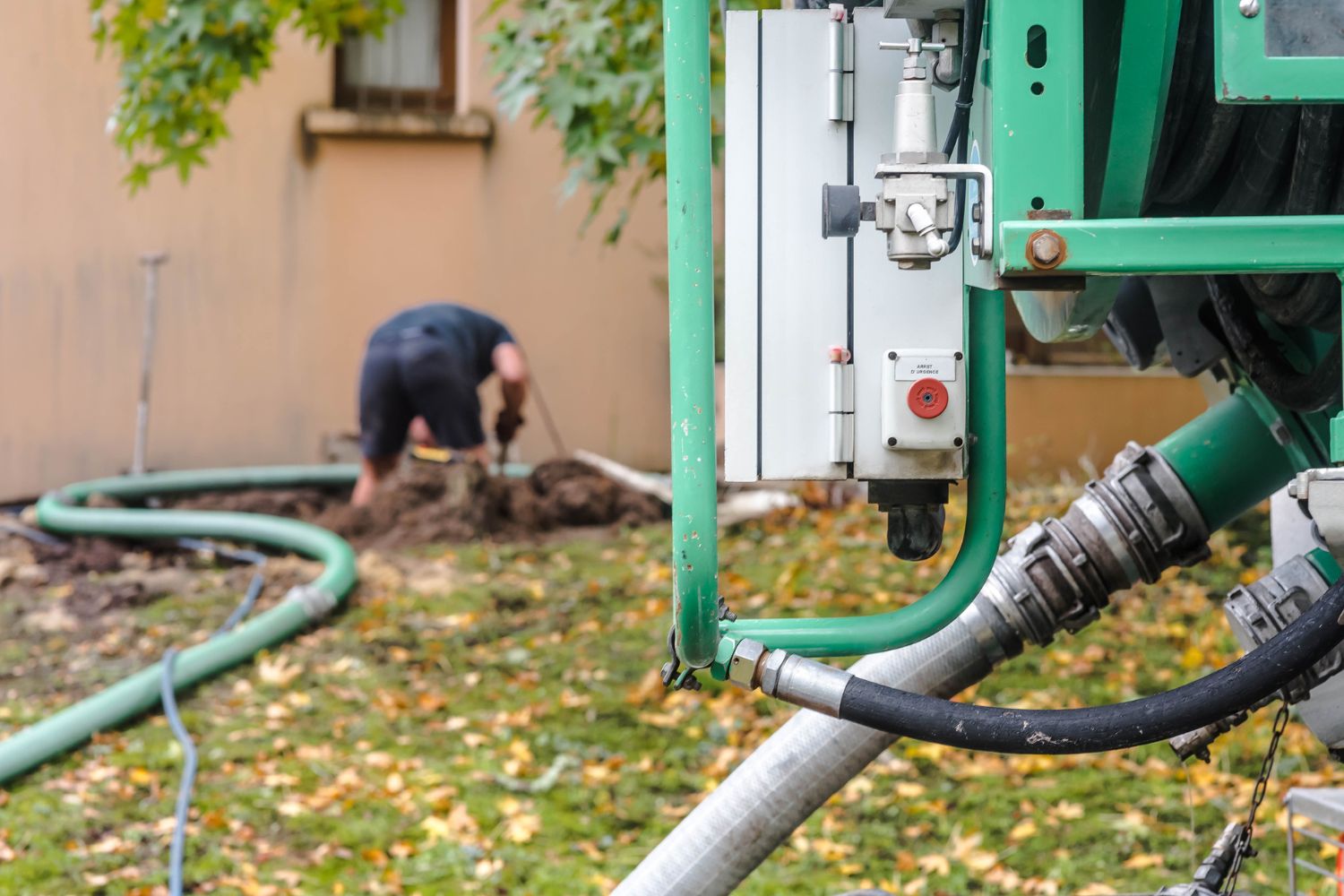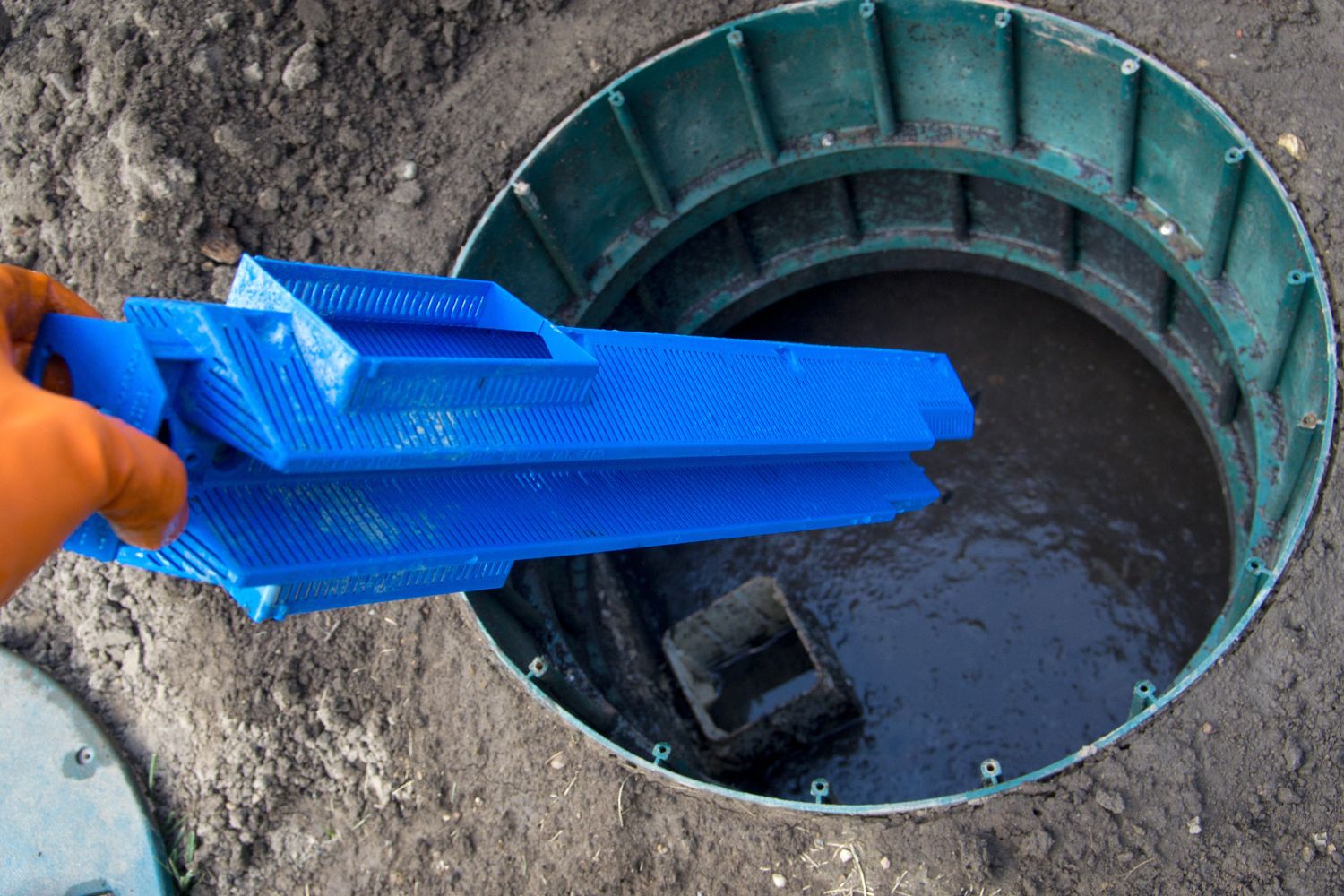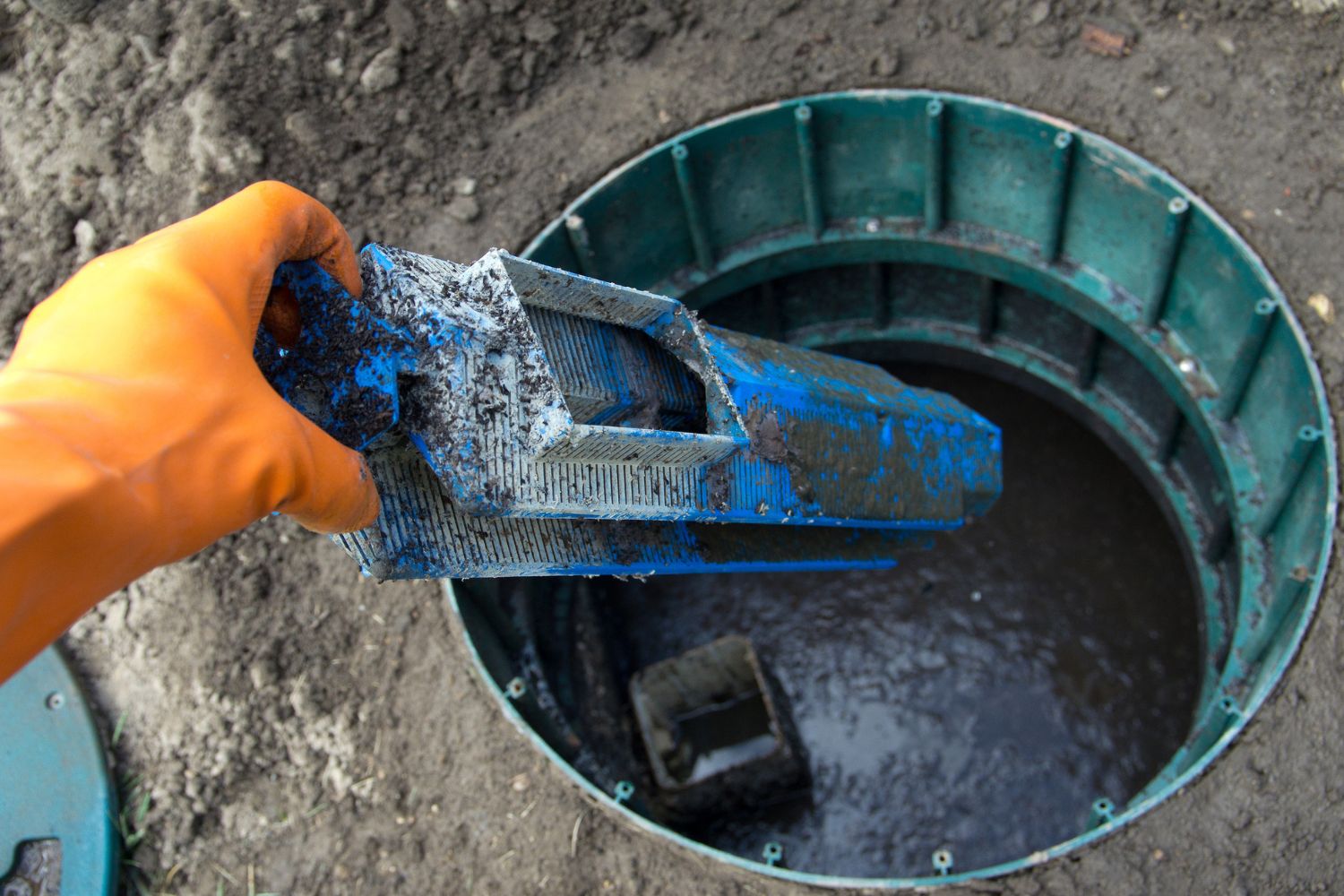

We may earn revenue from the products available on this page and participate in affiliate programs. Learn More ›
Highlights
- Septic tank inspection has a typical cost range of $200 to $900, and a national average cost of $550.
- Some of the main factors that affect the total cost include the type of inspection, the size of the septic tank, and the need for any additional services.
- A homeowner might need a septic inspection as part of regular maintenance, when buying or selling their home, or if they notice septic tank–related issues.
- A septic tank inspection is typically not a DIY job; this task is best left to a professional because it requires specialized knowledge and safety precautions that the average homeowner is likely not aware of.
Septic systems are unsung heroes of the home, quietly doing their job day in and day out without calling for much attention. But just like any other home system, they require regular maintenance, including inspections. A septic inspection is a comprehensive evaluation of a septic system that homeowners should schedule on a regular basis to ensure their system is properly functioning. Typically performed by a licensed inspector, a septic inspection thoroughly examines the system’s tank, pipes, and drain field. Although a septic system may appear to be functioning fine, an inspection can uncover potential issues before they cause serious damage or require expensive repairs.
According to HomeAdvisor, septic inspection cost typically ranges between $200 and $900, with a national average cost of $550. The exact cost can vary depending on several factors, such as the type of inspection and the size of the tank. This guide will cover these factors in detail, discuss the different types of septic inspections, cover a few reasons a homeowner may need to have this service performed, and offer tips on saving money and hiring a professional.

Factors in Calculating Septic Inspection Cost
Septic inspection cost can vary depending on several factors, including the system’s tank size and the type of inspection being performed. By understanding the following factors, property owners can make more informed decisions about septic inspections and budget accordingly.
Inspection Type
One of the major factors in determining septic inspection costs is the reason behind the inspection. For example, an emergency inspection can be more expensive than a routine inspection, especially after normal working hours or on holidays. However, even scheduled inspections can have different price points depending on their level of detail.
For example, routine septic maintenance inspections are the most affordable but not very extensive. Basic inspections cost a bit more and include more testing. Detailed inspections are typically recommended when a septic system is displaying signs of possible failure. Since this type of inspection involves multiple tests and steps, it’s one of the more expensive options. Finally, camera inspections can be some of the most expensive inspection types but are only required when a suggested issue or concern can’t be confirmed or eliminated with a visual inspection.
Septic Tank Size
The size of a septic system’s tank can also influence the cost of septic inspections. Generally speaking, a larger tank will take more time and effort to inspect, which can increase the overall cost. On the other hand, smaller tanks may be easier and quicker to inspect, resulting in a lower cost.
Another factor to consider is the required inspection equipment. Larger tanks may need specialized equipment or additional personnel to ensure safe and efficient inspections, which can also contribute to higher costs. Septic tank size often correlates with property size, so those considering a property with an existing septic system or installing a system for the first time will need to know that a larger piece of property will often equate to more expensive septic tank inspections.
Related Services
There are some common related services that may be necessary or recommended during an inspection that can increase the cost. These services can include things like pumping the tank, replacing the tank filter, or jetting the tank to remove buildup. The costs for these services are as follows:
| Septic Tank Service | Average Cost |
| Pumping | $290 to $550 |
| Jetting | $175 to $400 |
| Filter replacement | $250 to $300 |
| Leach drain replacement | $3,000 to $20,000 |
Septic tank pumping is the process of removing accumulated solid waste and sludge from the tank. If the waste is left to accumulate for too long, the tank can potentially overflow, resulting in unpleasant odors and potential health hazards. Pumping is required on a regular basis, with average septic tank pumping costs falling between $290 and $550 per service.
Tank jetting costs between $175 and $400. Jetting helps clear septic lines of debris, including soap residue, grease, and hair. Aside from pumping and jetting, septic tanks also have filters that should be replaced as needed to prevent the system from clogging. This service costs between $250 and $300.
A system’s leach drain, or drain field, can become damaged or clogged over time. Drain fields allow wastewater to release slowly into the soil, where it’s naturally filtered and treated. A damaged field can cause catastrophic damage to a septic system. Unfortunately, replacing leach drains is not an affordable service, costing anywhere from $3,000 all the way up to $20,000, depending on the type of replacement system chosen.
Types of Septic Inspections
There are several different types of septic inspections, with each offering a different degree of detail. The type of inspection needed will depend on the circumstances, such as when buying a home or as part of annual maintenance. Listed below are three common types of septic inspections, along with their descriptions and price ranges.
| Type of Inspection | Average Cost |
| Basic inspection | $250 and $400 |
| Camera inspection | Up to $900 |
| Detailed inspection | $400 to $700 |
| Routine maintenance | $200 to $250 |
Basic Inspection
A basic inspection is more detailed and typically required only every 3 years instead of annually. A basic home inspection includes a dye test and visual inspection, along with simple septic tank tests. A sludge and scum level measuring test is also performed, which is a type of septic test that involves the inspector inserting a long probe or stick into the tank to measure how thick the sludge and scum layers are. Basic inspections cost between $250 and $400.
Camera Inspection
Camera inspections are the most expensive type of septic inspection, but they also provide more detailed and accurate information. Camera septic system inspections can cost up to $900 and are typically only recommended if there’s a problem that can’t easily be identified or assessed during a basic visual inspection.
During a camera inspection, a small camera is inserted into the septic system’s pipes or tank. The camera is connected to a monitor that allows the inspector to view the footage in real time. With a camera inspection, an inspector can look at cracks, corrosion, clogs, or other issues and use the findings to make recommendations for repairs, maintenance, or, in a worst-case scenario, a full septic system, with septic tank replacement costs averaging over $6,000.
Detailed Inspection
Detailed inspections include everything in a basic inspection, along with a wastewater flow test, soil testing, and a tank size audit to ensure that the septic system is appropriately sized for the needs of the property. A detailed septic inspection can cost between $400 and $700 on average.
Routine Maintenance
A routine maintenance inspection is typically performed annually and is designed to identify minor issues within a system before they turn into major problems. During an annual inspection, a professional septic inspector assesses the overall condition of a septic system, including the tank, drain field, and related components. A visual inspection will search for signs of damage or wear on the tank and visually evaluate the levels of sludge and scum in the tank to determine if a pumping service is required. The drain field will be evaluated for signs of clogs or leaks, and a system’s plumbing will also be visually inspected.
An inspector is also likely to perform a dye test during a routine maintenance inspection. During the test, a nontoxic dye is added to a sink, toilet, or other plumbing fixture within the home and pushed through the system. The dye is usually a bright color, making it easy to visually spot any leaks or issues with wastewater ending up in places it shouldn’t. Routine annual septic maintenance costs between $200 and $250.

Do I Need a Septic Inspection?
It’s important for homeowners to understand when to schedule a septic inspection. In some cases, neglecting inspections can lead to costly and even potentially hazardous issues down the road. In other situations, an inspection is legally required. The following scenarios all trigger the need for a septic inspection.
Regular Maintenance
Regular maintenance is one of the most important reasons for a homeowner to schedule a septic inspection. Over time, a septic system can experience clogging, leaks, or corrosion in its pipes or tank. When caught early, many cases of wear and tear can be addressed quickly and affordably. But if they go undetected for too long, repairs can quickly become more serious and expensive.
Regular maintenance can add reassurance that a septic system is operating properly and efficiently, ensuring that a system won’t need to be replaced prematurely. It’s recommended that a septic system be inspected every 1 to 3 years for maintenance, depending on how old the system is and the size of the household it serves.
Buying or Selling a Home
Buying or selling a home is a common reason for scheduling a septic inspection. For buyers, a septic inspection is often a contingency of the sale and part of the home inspection cost and process. In other words, the sale of the home can only go through if the septic system passes inspection.
Septic inspections aren’t just for buyers, though; sellers also benefit from inspections. A septic system that passes inspection can provide assurance to buyers while ideally speeding up the closing and even increasing the value of the property. While septic inspections are common practice in real estate, some states have laws that make them mandatory, requiring that a septic inspection be performed before a property can be transferred to a new owner.
New Construction
Another common reason for a septic inspection is when new construction is occurring. This is a regulation that ensures a septic system is installed correctly and meets all the proper requirements. Septic inspections for new construction typically involve a few more touch points. The system plans are reviewed before construction begins. An inspection is typically performed midway, with a final inspection after the system has been fully installed. A new construction inspection may also include testing the system’s tank and drain field. New construction inspections are common practice and can provide peace of mind to new homeowners that their septic system is functioning properly and efficiently.
Tank-Related Issues
When a septic system’s tank begins to show signs of wear and tear, an inspection is crucial. Even the best-designed and maintained septic systems begin to fail with time, especially the tank. After years of daily use, a tank can develop cracks, leaks, or blockages that can leave the entire system inoperative.
For example, a crack or leak can cause a tank to fail, leading to backups or other system issues. Something as simple as grease or paper products can cause a blockage in the tank, also leading to a backup or slow drainage. A septic inspection performed as soon as tank-related issues present themselves can identify any issues with the tank and prevent more serious problems down the line.
Septic Inspection: DIY vs. Hiring a Professional
Budget-conscious homeowners may wonder if they can take on a septic inspection on their own. However, while a DIY inspection may seem like an obvious way to save on costs, it is typically not the safest or most effective approach.
To start, many states have strict requirements for septic systems and inspections. Septic systems are complex and require specialized knowledge and equipment, both of which an average homeowner likely does not have. Septic systems must be evaluated by a licensed inspector instead of through a DIY inspector. Additionally, septic tanks contain toxic gases and hazardous materials that can quickly turn a DIY inspection into a dangerous situation.
Even if a homeowner knows how to find their septic tank and has the knowledge and equipment to tackle a septic inspection without putting their health at risk, there’s still a risk of them missing an important issue or misinterpreting the current state of their system. Such oversights can end up costing a homeowner more time and money in the long run.
Hiring a professional for a septic inspection is usually the wisest approach. Septic tank inspection companies have the necessary experience to identify potential issues and also provide custom solutions. A certified inspector also has access to specialized equipment, such as cameras and probes, to ensure the inspection is as thorough as possible.
A septic inspection isn’t an enjoyable task, and if the only motivator behind a DIY inspection is saving money, hiring a professional may actually be the more affordable and effective option.

How to Save Money on Septic Inspection Cost
While regular inspections are the best way to ensure a septic system is running efficiently and properly, they can be costly. However, there are several ways to save money on septic inspection costs while ensuring the inspection provides as much value as possible. The following are some tips to consider.
- Get several quotes. Receive multiple septic tank water treatment quotes and compare pricing and inspection details to find the best value.
- Perform regular maintenance. Keep up on regular maintenance to spot potential problems early on and ideally avoid costly repairs while prolonging the life of the system.
- Opt for multiple services at once. Combine an inspection with other septic system services, such as pumping, to take advantage of discounted rates.
- Become familiar with septic inspections. Learn about the different types of septic inspections, such as what they include and how often to schedule septic tank pumping and inspections, to avoid overpaying for unnecessary services.
- Be proactive. Address any and all signs of septic system issues as soon as possible.
- Be conscious of what you flush. Conserve water and be mindful of what goes down the drain to avoid overburdening the system and causing potential backups, which can result in additional inspections.
Questions to Ask About Septic Inspection
Before scheduling a septic inspection, it’s important that a homeowner knows what to expect and what questions to ask an inspector. Asking the right questions can help ensure that a thorough inspection is performed and any potential issues are identified as early as possible. The following are some questions for a homeowner to consider asking their septic inspector.
- Is my septic system due for an inspection?
- What will the inspection include?
- Will you provide a detailed report of your findings?
- How much experience do you have with septic inspections?
- Are you licensed and insured?
- Can you provide any references or credentials?
- When can you add my inspection to your schedule?
- How long will the inspection take?
- Will you complete just a visual inspection or a full inspection?
- What type of repairs are you recommending?
- How urgent are any suggested repairs?
- Does it make more financial sense to repair my septic system or replace it entirely?
- What type of ongoing maintenance do you recommend?
FAQs
A septic system inspection is a crucial part of home maintenance. By identifying potential issues early on, it may be possible for a homeowner to avoid costly repairs and ensure a system stays operational for as long as possible. While septic inspection costs can be an added maintenance expense, the benefits are well worth it. To learn more about septic inspections, homeowners can refer to the following frequently asked questions.
Q. Does homeowners insurance cover septic inspection costs?
While every policy is unique, most homeowners insurance does not provide coverage for septic inspections. However, if a septic system is damaged from a covered peril, such as from fire or freezing temperatures, some policies may offer coverage. It’s recommended that a homeowner contact their insurance provider to find out more about their policy’s coverage for septic systems.
Q. What is the average life expectancy of a septic tank?
The average life expectancy of a septic tank can vary depending on several factors, including how it was installed and how well it’s been maintained. However, a well-maintained septic tank can last for 20 to 30 years or more. To prolong the lifespan of a septic tank, property owners will want to have the tank pumped regularly, avoid flushing nonbiodegradable items, and maintain the drain field.
Q. What are the signs of a failing septic tank?
Several signs can indicate a failing septic tank including slow-draining sinks, foul odors throughout the home, standing water in the yard near the tank, frequent sewage backups, and a frequent need for tank pumping. If a property owner notices any of these signs, it’s crucial that they have a professional septic inspection as soon as possible.
Q. How much does septic inspection cost on average?
The cost of well and septic inspection can vary depending on several factors, such as the location of the system, its size, and the complexity of the inspection. The average cost of septic inspections is around $550. However, prices can range from as low as $200 to as high as $900. It’s recommended that a property owner seek out multiple quotes from several of the best septic tank cleaning companies to find the best value.
Q. How often should I empty my septic tank?
A septic tank should be pumped every 3 to 5 years, depending on the size of the tank and how many people are using it. However, if any signs of a septic system issue are observed, such as slow-draining sinks, gurgling pipes, or foul odors, it’s crucial for a homeowner to schedule an inspection as soon as possible to see if the tank needs to be pumped sooner than expected.
Q. What happens if I don’t inspect my septic tank regularly?
Failing to have a septic tank inspected regularly can result in a range of problems. Over time, solid waste can accumulate in the tank, leading to overflow and the possibility of sewage backing up into a home or yard. Sewage backups are serious health hazards and can damage property. Infrequently pumped tanks can also clog, resulting in expensive repairs.
Sources: HomeAdvisor
